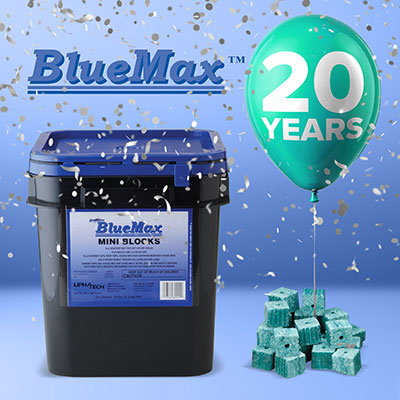
Liphatech’s trademarked BlueMax rodenticide has been a solution that pest management professionals (PMPs) have used since 2005. The rodent removal and tracking capabilities of BlueMax have stood the test of time, and it continues to offer durable, effective rodent control.
BlueMax’s formulation includes difethialone, a Liphatech-exclusive, second-generation anticoagulant rodenticide, as well as preservatives that act as mold inhibitors. This makes BlueMax ideal for humid, high-moisture conditions. Its palatability and formulation work well where crumbs and scatter are a concern, including in food-processing and commercial accounts.
In addition to providing effective control against house mice (Mus musculus), Norway rats (Rattus norvegicus) and roof rats (R. rattus), BlueMax contains a blue marker dye that can be seen in rodent droppings, making it an ideal maintenance rodenticide for audited accounts. PMPs can use this dye to track rodent populations and adjust their control strategy as needed for best results. BlueMax mini blocks are available in 16-pound pails.
PMPs can also rely on the expertise of Liphatech’s long-standing technical team. With more than 150 combined years of technical pest management experience, the Liphatech team works to help PMPs find the most effective solutions for the toughest pest problems.
About Liphatech
With U.S. headquarters based in Milwaukee, Wis., Liphatech is a worldwide manufacturer of pest control products. It is considered to be the developer of three of the industry’s active ingredients: chlorophacinone, bromadiolone and difethialone. The company was founded in France in 1946 io develop anticoagulants for the treatment of heart patients. It developed chlorophacinone in the 1960s and branded it as Rozol, a family of products that includes grain and pelleted products for field and structural use, and a tracking powder for use in and around structures. In the 1970s, Liphatech developed bromadiolone, its original second-generation rodenticide active ingredient.
The innovations continued with the opening of its U.S. facility in 1987. Research there and in Europe resulted in the discovery of difethialone during the late 1980s, with U.S. Environmental Protection Agency registration as an active ingredient in 1995.
Leave A Comment